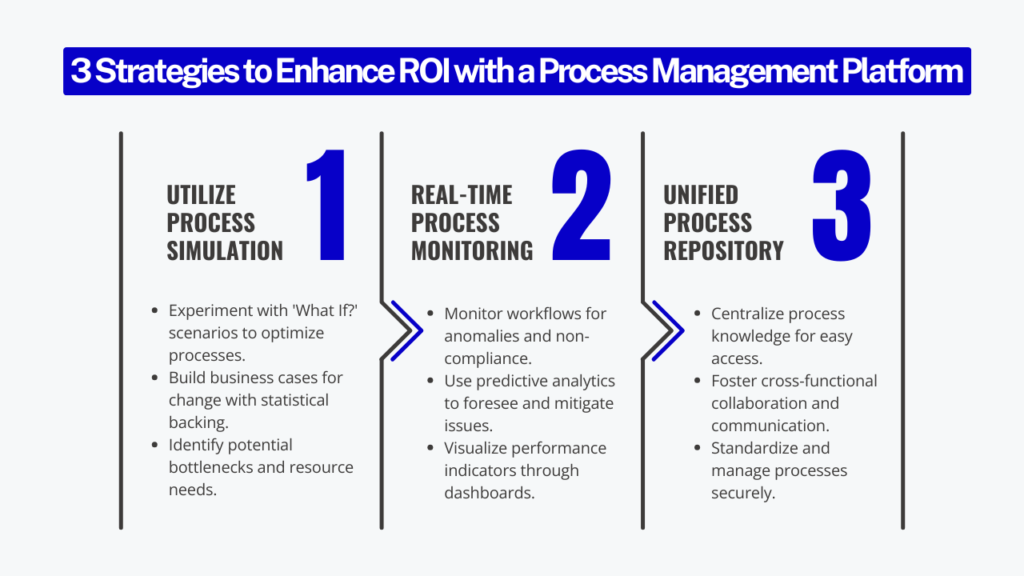It was 55 years ago that a song was released about the year 2525 and beyond. So, in the year 2025, 500 years before that possible future, you may be wondering how you and your organization can thrive in a rapidly changing world. With Artificial Intelligence (AI) holding the promise to remake the business landscape and already starting to do so, we are likely in for a wild ride. While AI holds the promise for the future, what can you do now to gain a Return on Investment (ROI) in 2025 with existing technologies, and with investments you’ve already made?
If you’ve been tuned into our blogs, you already know that we believe that Business Process Management platforms are a ‘game-changer’ for ROI, enabling businesses to understand what’s happening, uncover inefficiencies, align operations with strategy, and drive measurable results throughout the Enterprise. You cannot change what you do not know about, and building a ‘Digital Twin’ of your organization (DTO) can not only help you see what’s happening, but it can also help you analyze and improve it as well.
So, what can you do now, on the cusp of 2025 and the future,how can your organization leverage a Process Management Platform to not only adapt but thrive and secure meaningful ROI?

1. Utilize Process Simulation to Reduce Risk and Optimize Outcomes
Process Simulation is a key feature of a modern Process Management Platform, and allows you to ask powerful ‘What If?’ questions, experimenting with the process in ways you often cannot do in real life. It allows you to build a business case for change in existing processes, or for the successful implementation of new ones. You’ll have statistics to back up the probability of success based on your simulation experiments. This approach helps drive measurable results, contributing significantly to achieving ROI in 2025.
For example, let’s assume that you have questions about meeting demand due to fluctuating market, regulatory, and other factors. Not only can you build a simulation model to vary demand and see the impact on your ability to meet that demand, but you can also look at how a facility or even the entire supply chain provides the capacity to meet a given demand. Will bottlenecks occur? Are you likely to have overstock of materials? If you have a more transactional process, are you concerned about your turnaround / lead times missing Service Level Agreements (SLAs) or market opportunities? Cost per piece of work skyrocketing? You can look at all these factors and more.
With Process Simulation, you can gain process insights that are difficult or impossible to obtain any other way. Does hiring more people or buying new equipment help? With Process Simulation you can ask that question; it’s not one you’re likely to try in real life; it’s costly at best, and impractical at a minimum. If necessary, you can even perform trial-and-error experiments in a low-cost and low/no-impact manner. Process simulation turns data into actionable insights.
So, with Process Simulation, you can achieve potentially large ROI for your investment in building a ‘Digital Twin’ of your process(es) that answer questions you can’t answer any other way, or that you can answer with better confidence.
2. Leverage Real-Time Process Monitoring for Proactive Decision-Making
We’ve talked about how Process Simulation turns data into actionable insights, in a forward-looking ‘What if?’ manner. But what about what’s happening right now, in the real world, before you’ve had a chance to implement any change that simulation can help you make? We want to monitor what’s happening in real time to detect inefficiencies, compliance risks, or opportunities for improvement as they happen. This is where Process Mining and data visualization through dashboards come into play.
With Process Mining, where you’re leveraging data captured by your systems, you can not only understand what’s actually happening and flag any non-compliance or concern, but you can also use powerful predictive analytics to catch and correct issues before they develop or get worse.
For example, in a Purchase-to-Pay process, you can monitor workflows for anomalies, such as a process non-compliance in reviewing a purchase order or invoice before payment. Whether that’s identifying non-conformance to the expected flow or creating alert conditions and setting up a dashboard to monitor and flag any non-compliance.
In addition to monitoring non-conformance as it happens, you can use powerful predictive analytics in process mining to predict future behavior. Will we meet our stated SLAs or other important metrics? If not, why not? What is happening in the process right now that is impacting our ability to perform as desired and expected?
Furthermore, whether you’re leveraging Process Mining or not, the ability to define ‘Performance Indicators’ (whether those are Key Performance Indicators / KPIs or others) and then visualize them on a dashboard is powerful. For example, you might have a ‘Performance Tree’ that will provide green/yellow/red ‘stop light’ assessment of how processes are performing and roll up those assessments hierarchically for senior management to view and assess. You can have performance gauges, charts, and tables that visualize current organizational performance, and have that data loaded via API or simply by having someone update the data ‘by hand;’ whatever meets your needs, budget, and capabilities.
Having the ability to leverage real-time process monitoring and visualization through dashboards helps enable proactive decision-making. Having continuous visibility of what’s happening in your organization leads to faster resolution of issues, reduced downtime, and a more agile organization. So, once again, you have increased ROI by simply investing in a BPM solution that allows you to gain insights into current performance and make that information available to the appropriate audience.
3. Drive Collaboration with a Unified Process Repository
How many ‘sources of truth’ exist in your organization? How many places must someone go to know what they should be doing and/or how to do it? While there is no ‘one size fits all’ (or ‘one ring to rule them all’) solution that I’m aware of, there can be ‘one size fits most’ or perhaps ‘one solution solves many issues’ available to you. So, focusing on BPM solutions, one particular benefit provided is a unified repository for process and related data.
A centralized process repository provides a centralized ‘source of truth’ for process and related knowledge. One place to find, understand, and manage knowledge around your processes, even if that one source contains linkages to other sources of information. The goal does not have to be to store everything in one place; the goal can be to have one place to find and access ‘everything’ you need related to process knowledge.
A centralized process repository contains the structures, templates, and functionality to standardize, improve, and manage the processes of the organization. All in a secure, access-controlled and permissions-managed and auditable environment. Information is contained in one place, and no longer so likely to ‘walk out the door’ when the humans doing the work leave the organization.
A centralized process repository fosters cross-functional collaboration by being able to see across functional boundaries to what process knowledge exists, how end-to-end processes or ‘Value Chains’ leverage that functional process landscape, and even to ‘Journey Mapping’ or ‘Value Stream Mapping’ to focus on ‘seeing the whole’ and relating it to the specific process and even procedural knowledge needed to go from overview to execution. A centralized repository helps ensure that everyone is working from a single source to find the information needed.
For example, you might be implementing a new ERP system (or a new version of an existing ERP system). What processes can leverage the system, and/or currently do and could get better use from it? What people are impacted by any system change? What customizations to the system have been made or are needed? How do we avoid duplicate work on implementation or customization, and keep all the disparate teams working the effort ‘on the same page?’ A centralized repository that provides that ‘main source of truth’ offers collaboration and reporting to help teams work more effectively together.
The collaboration that a central BPM repository provides helps you break down silos between organizations and processes, reduces inefficiencies and improves communication. This in turn improves project outcomes, directly boosting ROI.
Conclusion
I’ve reviewed some of the ways that Process Simulation, real-time data monitoring and dashboarding, and a centralized repository within a Process Management Platform can collectively unlock ROI in 2025. While I’ve ‘scratched the surface’ of the power and benefits of a business process management platform, there’s so much more to help you and your organization benefit from process intelligence.
Our website certainly has more information about iGrafx solutions, and beyond our website we can directly help you explore how iGrafx can help you achieve these results. Click here to book a demo of iGrafx Process360 Live.

